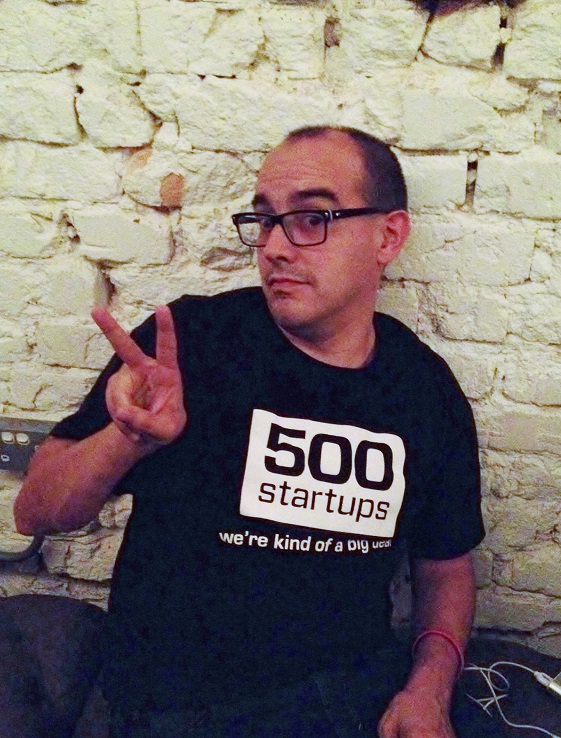Silicon Valley? Why the Singapore startup ecosystem rocks
By Justin Hall February 27, 2015
- Singapore is the model for every govt trying to create its own startup ecosystem
- To kickstart a startup ecosystem, you first need to kickstart the venture capital industry
 I WILL never forget the time I introduced myself as an investor from Singapore to a colleague from the United States. He was a professor from MIT, heavily involved in its entrepreneurship programme, and clearly a frequent imbiber of his own delicious Kool-Aid.
I WILL never forget the time I introduced myself as an investor from Singapore to a colleague from the United States. He was a professor from MIT, heavily involved in its entrepreneurship programme, and clearly a frequent imbiber of his own delicious Kool-Aid.
“Singapore,” he mused coolly. “I’ve never been there, but I hear the government controls everything, and the startup ecosystem is stunted as a result.”
Investors are masters of double-speak. To wit, “Well, maybe you should come visit us so you can see exactly how stunted we actually are. Speaking of which, funny about New York City trumping Boston in venture capital nowadays, huh?”
Granted, in my mind there were perhaps a few choice expletives thrown in for good measure, but this is a mainstream, family-friendly column, so I’ll refrain.
This may come as a shock to my industry colleagues, especially those hailing from the United States and Europe, so I’ll be as straightforward as possible: No other country in the world has a government that fosters and supports its startup ecosystem better than Singapore (with the possible exception of Israel).
Indeed, Singapore has been so effective at growing its startup ecosystem that it should be considered the public policy model for every government around the world – be it local, regional or national – intent on creating its own startup ecosystem.
Silicon Valley, in all its technological glory, is the result of an inimitable combination of nearly 50 years of technical development, venture capital, unparalleled human capabilities, and a healthy dose of luck.
That kind of history simply cannot be replicated, and most government initiatives that attempt to do so – Egypt’s ‘Silicon Pyramid’ and Japan’s Science City Tsukuba are some of the better known examples – often fail miserably.
Governments try to follow the adage that “If you build it, they will come.” In academic terms, that’s called ‘clustering initiatives.’ In layman’s terms, it’s called, “Let’s throw as much money at this and see if something sticks.”
Unfortunately, simply erecting the buildings, planting the Internet cables, and providing tax incentives to any company willing to incorporate in the country simply doesn’t work. You can’t create something out of nothing.
But that shouldn’t keep governments from trying. Much to the chagrin of my colleague from MIT, there are appropriate, actionable policies that governments can do to facilitate and grow their ecosystem.
And they involve money. Lots and lots of it.
 I am struck by the oft-repeated adage of Dave McClure (pic), managing partner and founder of 500 Startups. When describing how to build a startup ecosystem, Dave explains that every self-sustaining ecosystem needs investors willing to write cheques for the earliest companies and founders.
I am struck by the oft-repeated adage of Dave McClure (pic), managing partner and founder of 500 Startups. When describing how to build a startup ecosystem, Dave explains that every self-sustaining ecosystem needs investors willing to write cheques for the earliest companies and founders.
Early successes – be it larger rounds, exits, or even public offerings – bring in more investors, which facilitates more startup formation and even greater success.
But it all starts out with the earliest of investors, those willing to write that small cheque and help immature startups transform into global companies. The implication is that to kickstart a startup ecosystem, you first need to kickstart the venture capital industry.
And that’s exactly what Singapore did. And the beauty of it all is that not only are Singapore’s policies implementable by other governments, but they can be measured, quantified, and tailored to suit each country.
Modelling its policies after Israel’s Yozma Programme, Singapore followed a relatively simple two-pronged approach: Catalyse startup formation with government grants, and then force the startups to validate their concept by obtaining investment from a third-party investor.
For the iJam programme, after receiving their first grant, startups needed to bring on board an institutional investor to receive the full tranche of funding. For the Technology Incubation Scheme (TIS), the Government would match co-invest alongside institutional investors at a rate of 5-to-1: the investor would put in roughly S$100,000, and the government S$500,000. [S$1 = US$0.74]
This two-pronged approach – government funding qualified by institutional investors – continues to this day through the Early-Stage Venture Financing (ESVF) Scheme, which provides funds for investors themselves, on the conditions that they've raised sufficient private capital and that they invest in Singapore-incorporated companies.
And it’s this two-pronged approach that helped kickstart the venture capital industry in Singapore.
The one thing that these policies have in common is that they all improve the potential upside for the investor. By participating in these schemes, investors can leverage their own capital far more effectively.
iJam provides non-dilutive grants to startups, meaning that third-party investors can provide more bang for their buck; TIS investors can buy out the government’s share at any time (say before an exit or subsequent funding round); and ESVF investors have a partner that writes them a very large cheque to invest in Singaporean startups.
To my knowledge, there is no other government in the world that provides such a robust, end-to-end funding pipeline for investors and startups, from pre-seed all the way to growth stages.

The effects of these policy initiatives cannot be understated. Israel is the second largest startup ecosystem in the world when measured by venture capital dollars, and that is largely due to the policies it initiated to kickstart its venture capital industry.
Given that Singapore saw a jump from S$27 million in venture capital investment in 2011 to nearly S$2 billion in 2013, it’s clear that the country is moving in the right direction. This number will only increase, especially once the funds affiliated with the ESVF Scheme start coming online.
More importantly, these initiatives need not be dictated by history. They do not follow the ‘Silicon Valley’ model, nor do they have to.
That is not to say that the amount of government allowances needed to fund these initiatives is a drop in the bucket; indeed, the Singapore Government has devoted tens of billions of dollars to fostering its startup ecosystem.
But it nevertheless serves as an eminently replicable model that can serve as a framework for other governments around the world.
Who knows? Perhaps in five years’ time, if I ever meet my MIT colleague again, I can lament how Boston is now lagging behind South-East Asia, the poor thing.
Justin Hall is a principal at Golden Gate Ventures, an early-stage fund based in Singapore. A former Rakuten Network manager and scholar at NUS, he sources investable early-stage technology companies from South-East Asia. You can reach him via Twitter at @JVinnyHall.
Previous Instalments:
The funding floodgates open in SEA: The dangers therein
Investments, and navigating South-East Asia's legal morass
The motorcycle diaries: Startups and innovation
The delicate art of fundraising and valuations
Reaching out to investors, and the cold email
For more technology news and the latest updates, follow @dnewsasia on Twitter or Like us on Facebook.


